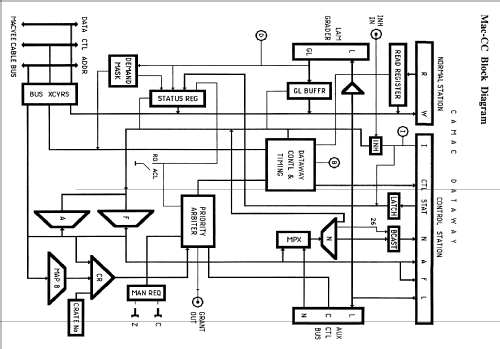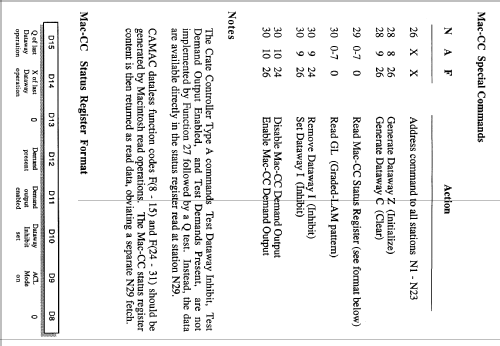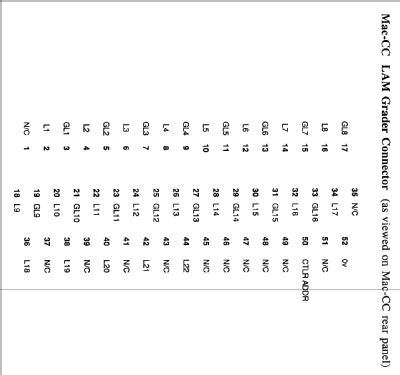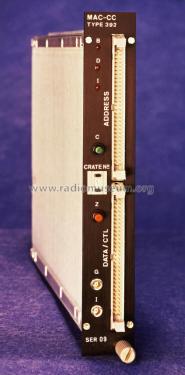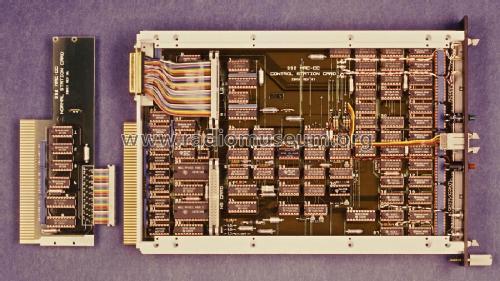- Hersteller / Marke
- Albis, Albiswerke AG (Siemens Switzerland AG / Telefunken Zürich AG / Siemens-Albis); Albisrieden
- Jahr
- 1984–1993
- Kategorie
- Signal Processing and Computing
- Radiomuseum.org ID
- 305347
Klicken Sie auf den Schaltplanausschnitt, um diesen kostenlos als Dokument anzufordern.
- Wellenbereiche
- - ohne
- Betriebsart / Volt
- Externes Speisegerät / Netzgerät / Hauptgerät / 6 Volt
- Lautsprecher
- - - Kein Ausgang für Schallwiedergabe.
- Material
- Metallausführung
- von Radiomuseum.org
- Modell: Mac-CC 392 - Albis, Albiswerke AG Siemens
- Form
- Rack
- Abmessungen (BHT)
- 34 x 222 x 309 mm / 1.3 x 8.7 x 12.2 inch
- Bemerkung
-
Defined jointly in 1972 by the U.S. NIM and European ESONE Committees, CAMAC (Computer Automated Measurement and Control) is a modular data handling system used at research laboratories and industrial sites all over the world. Mac-CC is a CAMAC crate controller for Macintosh computers. With the appropriate interface cards, such as A410 MICRON for the Macintosh II family, it can be connected to all models of the original closed Macs, and all the later open modular Macs that used the Apple NuBus.
The double-width module contains two printed circuit cards with 86-contact edge connectors, a main card that plugs into the rightmost control station and a daughter card that plugs into the adjacent normal station in a CAMAC crate. Up to 8 Mac-CCs can be daisy-chained on a pair of Data/Control and Address twisted-pair ribbon cables from the Macintosh interface, and the cables can be over 50m long. The crate numbers are selected by a thumbwheel switch on the front panel, and plug-in terminators should be present only in the last Mac-CC of the chain. There are front panel push-buttons for manual Initialize (Z) and Clear (C) operations, as well as an Inhibit signal input (Lemo I) and status LEDs for Dataway Busy (B), Demand (D) and Inhibit (I).
Connectors on the rear panel provide for links to an optional LAM grader and auxiliary controller in the CAMAC crate, and the selected priority arbitration mode (R/G or ACL) can be read at any time in the Mac-CC status register. As Mac-CC has a higher priority than any auxiliary controllers in the crate, only a Grant-out signal is provided at the front panel (Lemo G). The ACB Request signal is functionally connected to the Grant-in of the Mac-CC arbiter internally. In response to an ACL generated by an auxiliary controller, Mac-CC always completes the current CAMAC cycle before relinquishing control.
Mac-CC receives LAMs L1 - L23, and transmits the 23-bit LAM pattern to the ACB. It also transmits L1 - L22 to an optional LAM Grader and receives the demand pattern GL1 - GL16 after patching and masking in that unit. Alternatively, simple demand patching may be effected directly at the Mac-CC LAM Grader connector. Demand Present is generated if any GL bit is asserted. If in addition the Mac-CC Demand Output is enabled, a Level-7 Macintosh interrupt is generated, which is auto-vectored through $7C - $7F. During interrupt service, Macintosh reads the demand pattern by N(30).A(0-7).F(0).
Mac-CC was designed by Bruce Taylor and manufactured by Siemens-Albis SA. The controllers were used from 1984 until the mid-1990s, when new Macintosh models changed from Apple NuBus to PCI bus.
- Nettogewicht
- 1.2 kg / 2 lb 10.3 oz (2.643 lb)
- Autor
- Modellseite von Bruce Taylor angelegt. Siehe bei "Änderungsvorschlag" für weitere Mitarbeit.
- Weitere Modelle
-
Hier finden Sie 176 Modelle, davon 152 mit Bildern und 146 mit Schaltbildern.
Alle gelisteten Radios usw. von Albis, Albiswerke AG (Siemens Switzerland AG / Telefunken Zürich AG / Siemens-Albis); Albisrieden
Sammlungen
Das Modell Mac-CC befindet sich in den Sammlungen folgender Mitglieder.
